The abandonment rate in the financial industry can be reduced — but only by addressing the underlying causes and redesigning digital experiences with real user needs in mind.
Assisted vs. Automated onboarding: when is real-time human support the better option?

Although many organisations invest in digitising their onboarding processes to improve efficiency, the outcomes are not always as expected. In fact, over 63% of European users abandoned a digital onboarding process at least once last year because they found it too long or too complicated. *
U
nnecessary forms, lack of clarity and technical issues are among the most common causes of friction.
This presents a fundamental challenge for organisations: how to strike a balance between operational efficiency, regulatory compliance, and a user experience that doesn’t alienate potential customers or users.
Because abandonment may not be due to a lack of interest, but rather to the absence of support — or to technical issues and confusing experiences.
Automation, yes — But only where it makes sense
The advantages of unassisted onboarding are clear: scalability, efficiency, and 24/7 availability without relying on direct human involvement. It’s ideal for digitally confident users and straightforward processes.
But its limitations are just as significant: any unanswered question at the wrong moment can derail the conversion. Moreover, there are sectors and user profiles where full automation simply doesn’t fit.
Let’s look at some situations where pure self-service may not be enough:
- Older adults who need guidance
- Individuals with limited digital literacy
- People with visual or hearing impairments
- Users under pressure or in urgent situations, such as taking out insurance after a claim, validating medical records, or completing public procedures close to a deadline
How do users perceive real-time assistance?
The experience accumulated by many organisations shows that users particularly value the option of human support during a digital process — especially when it feels immediate, empathetic, and tailored to their needs.
Video calls or live chats reinforce a sense of closeness that mirrors face-to-face interaction. For users with limited digital autonomy, or in sectors where trust is essential (such as healthcare, banking or legal services), feeling accompanied — “as if someone were right there” — is a key factor in completing the process.
Real needs, different sectors: support that makes a difference
When we talk about real-time assistance, it’s not just about solving issues. It’s also about guiding decisions, clarifying key information, and building trust in moments where the user might otherwise drop out. This need isn’t limited to one type of user or any single sector.
- Banking: lower abandonment rates when onboarding clients with complex products or multiple documents. The ability to speak to a person at key moments builds trust and clears up doubts.
- Insurance: support in completing informed consent or choosing coverage. Assistance from an expert — almost as if face-to-face — can help users better understand sensitive products.
- Healthcare: guidance during patient identity verification. Many users highly value close support when dealing with medical data or accessing clinical services.
- Public sector: genuine digital inclusion, without gaps. Here, real-time assistance enables people who are less familiar with online procedures to complete processes without frustration.
- Human resources: support with uploading documents for new hires. HR teams report higher completion rates and fewer errors when candidates receive timely, focused assistance.
Reducing abandonment without losing efficiency
In today’s fast-paced digital environment, automating processes is not only desirable — in many cases, it’s essential. However, onboarding cannot be approached solely as a technical flow. It is, at its core, a person’s first real interaction with a brand, a financial institution, an insurer, or even a public service. This often involves emotional factors, personal expectations and moments of uncertainty.
That’s why automation must not mean abandonment. Experience shows that users who receive real-time support at the moment they need it are not only more likely to complete the process but also tend to view the service more positively. Combining digital efficiency with human guidance builds trust, reduces friction, and improves conversion rates.
Support can be activated precisely when it’s needed — without disrupting the rhythm of the process.
If your organisation is looking for new ways to reduce drop-off and increase conversions, now is the time to explore Alternative Onboarding: a strategy designed to reconnect with those on the verge of leaving.
Discover our project and learn how to turn each onboarding into a successful experience
* The onboarding advantage: how operational efficiency boosts conversion | Signicat
























